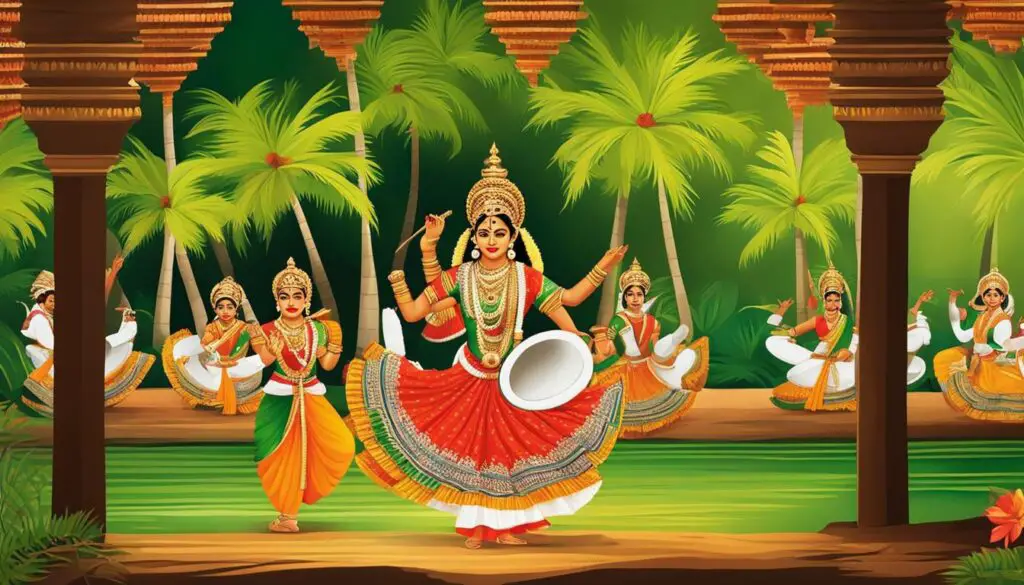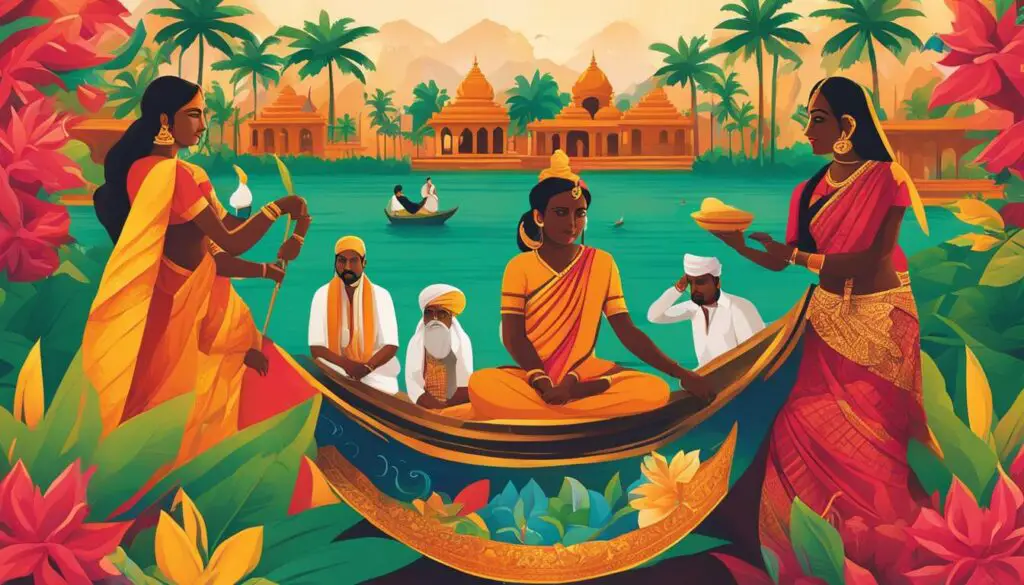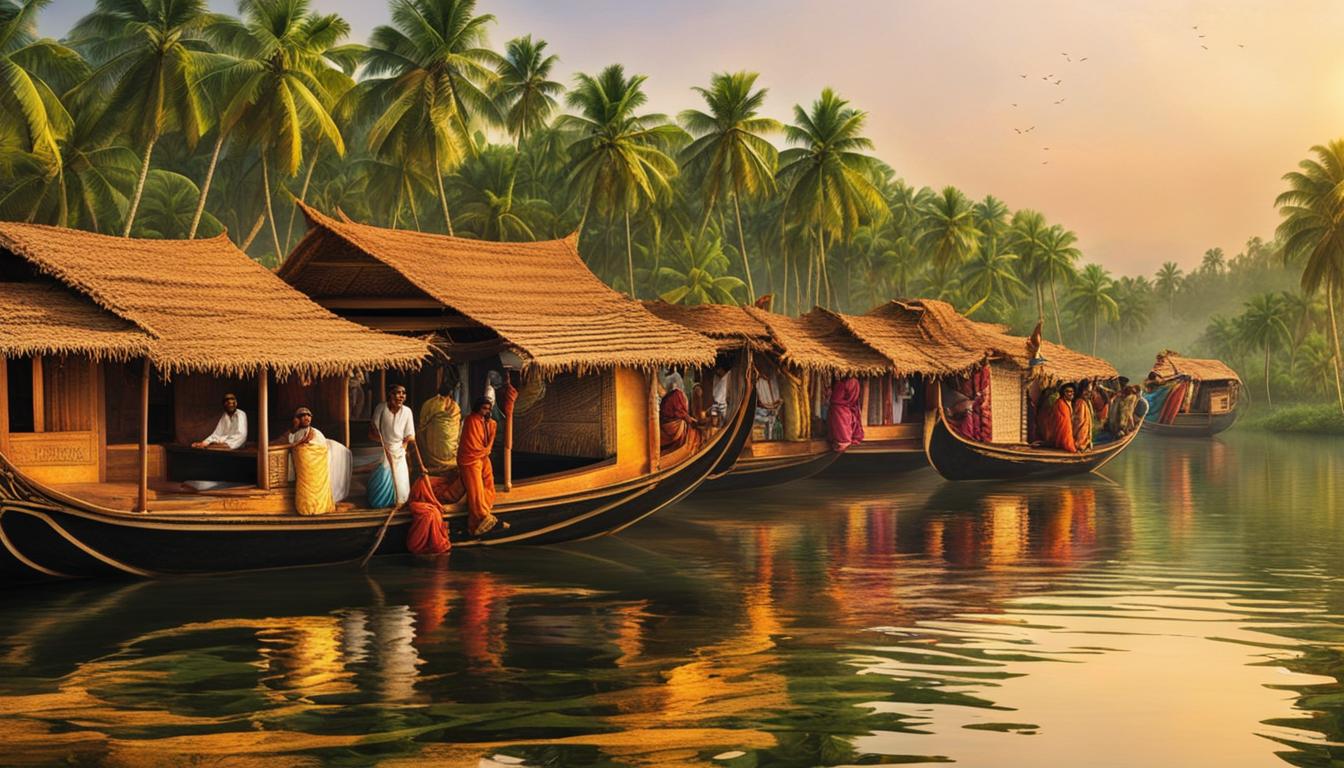Kerala, known as “God’s Own Country,” has a rich and fascinating history that dates back centuries. The formation of Kerala can be traced back to ancient times when it was part of the Chera kingdom. The term “Kerala” was first recorded as “Cheras” in a rock inscription by the Mauryan emperor Ashoka in the 3rd century BCE. During this time, Kerala was one of four independent kingdoms in southern India. The Cheras played a crucial role in establishing Kerala as an international trade center, with trade relations across the Arabian Sea. However, their dominion collapsed in the face of attacks from neighboring kingdoms.
Over the centuries, Kerala saw the rise and fall of various dynasties, including the Cholas and the Rashtrakutas. The arrival of Portuguese explorer Vasco Da Gama in 1498 marked the beginning of European influences in Kerala. The Dutch, French, and British also established trading interests in the region. After India’s independence in 1947, the state of Kerala was officially formed in 1956 by merging the former state of Travancore-Cochin, the Malabar district, and the Kasaragod taluk of South Canara District.
Key Takeaways:
- The formation of Kerala can be traced back to ancient times when it was part of the Chera kingdom.
- The Cheras played a crucial role in establishing Kerala as an international trade center.
- Various dynasties, including the Cholas and the Rashtrakutas, ruled over Kerala throughout its history.
- European influences in Kerala began with the arrival of Portuguese explorer Vasco Da Gama in 1498.
- Kerala was officially formed as a state in 1956 by merging several regions.
Early Influences and Cultural Contributions
Throughout its history, Kerala has been a melting pot of diverse cultures that have left a lasting impact on its traditions and heritage. The state’s early influences encompass a wide range of art, literature, and scientific contributions that have shaped its cultural fabric.
Philosophy and Mathematics
In the 8th century, Kerala gave birth to the great philosopher Adi Shankara, who laid the foundations of Advaita Vedanta philosophy. His teachings on non-dualism continue to resonate in the realms of spirituality and philosophy.
The 14th century witnessed the rise of the Kerala school of astronomy and mathematics, founded by Madhava of Sangamagrama. This school made remarkable discoveries in areas like calculus and infinite series, significantly contributing to the field of mathematics as a whole. The profound knowledge and insights gained by the scholars of the Kerala school continue to inspire and influence mathematicians worldwide.
Folklore and Mythology
Kerala’s rich folklore and mythology are an integral part of its cultural heritage. The state is home to captivating tales of legendary figures like Parasurama, who is believed to have reclaimed land from the sea. These stories have been passed down through generations, shaping the beliefs and customs of the people.
Performing Arts
Kerala’s vibrant performing arts scene is a testament to its cultural prominence. Traditional dance forms like Kathakali and Mohiniyattam have gained global recognition for their expressive movements and elaborate costumes. These art forms not only entertain but also preserve the history and mythology of Kerala.
In addition to dance, Kerala’s classical music traditions, particularly Carnatic music, have thrived over the centuries. The state has produced numerous talented musicians, composers, and vocalists who have enriched the Indian classical music landscape.
Ayurveda
Kerala’s contribution to the world of medicine lies in its ancient practice of Ayurveda. Ayurveda, meaning “the science of life,” has been an integral part of Kerala’s cultural heritage. Its holistic approach to wellness and natural healing methods have attracted people from around the globe, seeking alternative and traditional forms of healthcare.

Unification of Kerala and the Modern State
The unification of Kerala into a single administrative unit was a result of the United Kerala Movement, which gained momentum in the early 20th century. This movement was driven by the desire for political, social, cultural, and linguistic equality among the people of different regions in Kerala.
In 1920, the formation of Congress units based on language gave a boost to the movement, fostering a sense of unity and shared aspirations. This development laid the groundwork for greater collaboration and cooperation among the leaders and delegates from various parts of Kerala.
A significant event in the unification process was the State People’s Conference held in 1928. This conference played a crucial role in calling for the formation of a unified Malayalam-speaking state, emphasizing the need for a collective identity and representation.
However, the journey towards unification was not without obstacles. The Tamil-speaking people of Travancore expressed concerns about being treated as a minority in a Malayalam-dominated state, leading to apprehensions and resistance.
“We fear being overshadowed and losing our cultural heritage if Kerala becomes a united state dominated by the Malayalam language.”
Furthermore, the then ruler of Travancore initially opposed the idea of a united Kerala, citing the differences in language, culture, and administrative systems. Overcoming these challenges required extensive negotiations and the support of the Cochin ruler, who recognized the benefits of a unified state. Through strategic alliances and persuasive arguments, the momentum towards unification continued.
Finally, in 1956, the state of Kerala was formed through the merger of the former states of Travancore-Cochin, the Malabar district, and the Kasaragod taluk. This milestone marked the birth of the modern Kerala state, bringing together diverse communities, languages, and traditions under a common administration.
See the below table for a summary of the key events in the unification of Kerala and the formation of the modern state:
| Year | Event |
|---|---|
| 1920 | Formation of Congress units based on language |
| 1928 | State People’s Conference calls for a unified Malayalam-speaking state |
| 1956 | Formation of the state of Kerala through the merger of Travancore-Cochin, Malabar, and Kasaragod |

The unification of Kerala through the United Kerala Movement was a significant milestone in the history of the state. It symbolized the triumph of unity over division, creating a modern Kerala state that respects and celebrates the diversity and cultural richness of its people.
Conclusion
The formation of Kerala as a state holds immense historical and cultural significance. It represents the struggles and aspirations of the people of Kerala, who fought for linguistic, political, and cultural equality. Kerala’s rich history, diverse contributions, and cultural heritage have shaped its identity as a vibrant and unique state. Historically, Kerala emerged as an international trade center, fostering connections across the Arabian Sea. Today, it has transformed into a renowned tourist destination, showcasing the resilience, wisdom, and cultural richness of its people.
From its ancient roots, Kerala’s formation and evolution have played a pivotal role in shaping its character and charm. The unity of different regions and the unification movement, driven by the desire for equality, have made Kerala an exemplary model for linguistic harmony and cultural diversity. The formation of the state in 1956, bringing together Travancore-Cochin, the Malabar district, and the Kasaragod taluk, symbolizes the triumph of unity and the strive for a unified Malayalam-speaking state.
In summary, Kerala’s formation represents a remarkable journey of a region that has endured different dynasties, European influences, and the struggle for unification. It stands as a testament to the cultural, historical, and social significance of Kerala in the Indian subcontinent. The birth of Kerala as a state showcases the indomitable spirit of its people and their commitment to preserving and celebrating their heritage.
FAQ
When did Kerala officially become a state?
Kerala officially became a state in 1956.
What was the United Kerala Movement?
The United Kerala Movement was a movement in the early 20th century that advocated for political, social, cultural, and linguistic equality among the people of different regions in Kerala.
How did the formation of Kerala impact the Tamil-speaking people of Travancore?
The formation of Kerala faced opposition from the Tamil-speaking people of Travancore who feared being treated as a minority in a Malayalam-dominated state. However, with negotiations and the support of the Cochin ruler, Kerala was formed as a unified state.
What are some of the cultural contributions of Kerala?
Kerala has made significant contributions to areas such as art, literature, science, and philosophy. It is the birthplace of philosopher Adi Shankara and the Kerala school of astronomy and mathematics. Kerala is also known for its traditional dance forms and classical music traditions.
How did Kerala’s formation shape its unique character?
Kerala’s formation and evolution played a pivotal role in shaping its unique character and charm. Its rich history, cultural heritage, and contributions to various fields have made Kerala a vibrant and diverse state.
What is the significance of Kerala’s formation?
The formation of Kerala as a state holds historical and cultural importance. It is a testament to the struggles, aspirations, and unity of the people who fought for linguistic, political, and cultural equality. Kerala’s formation showcases the resilience, wisdom, and cultural richness of its people.
